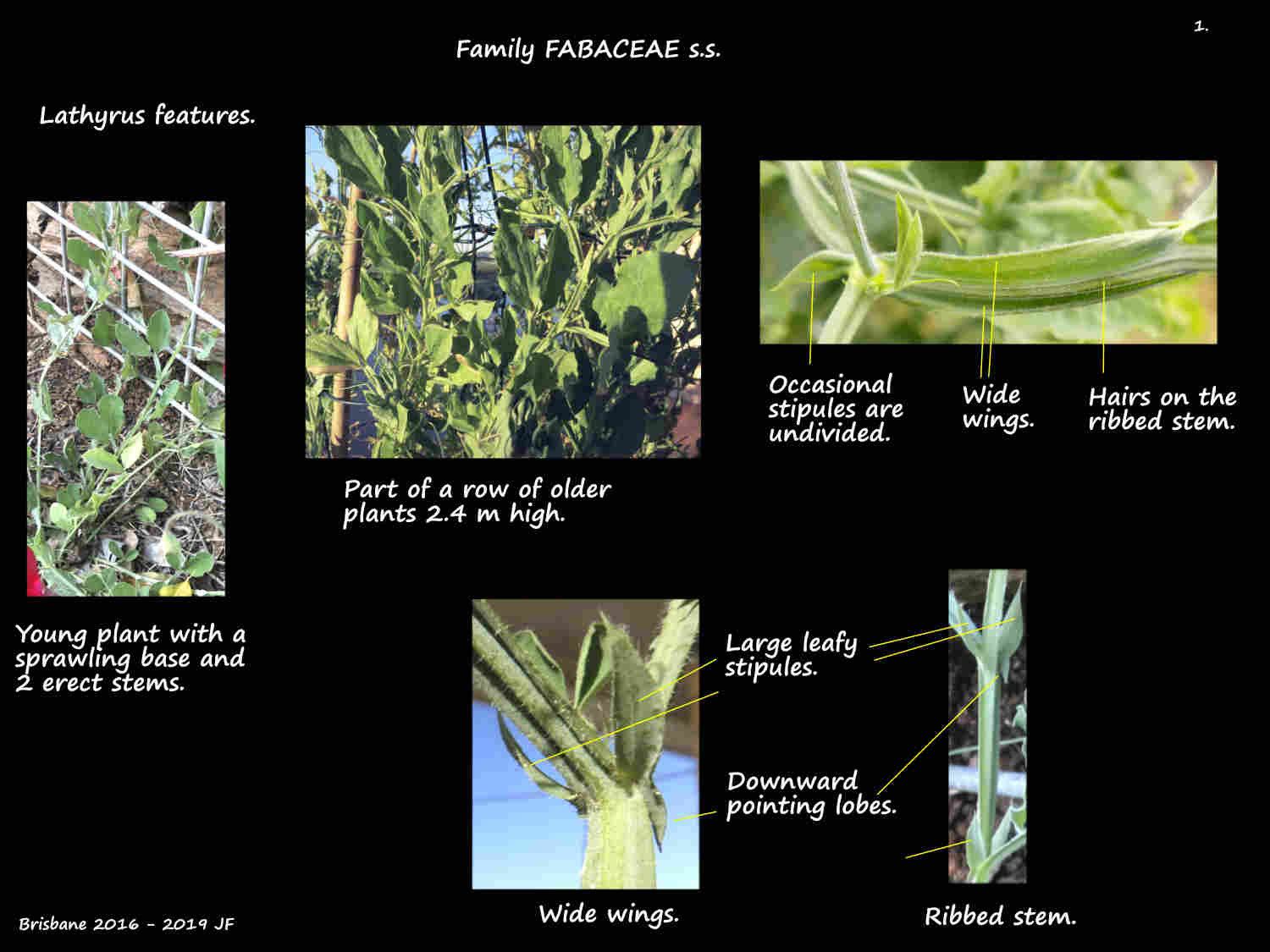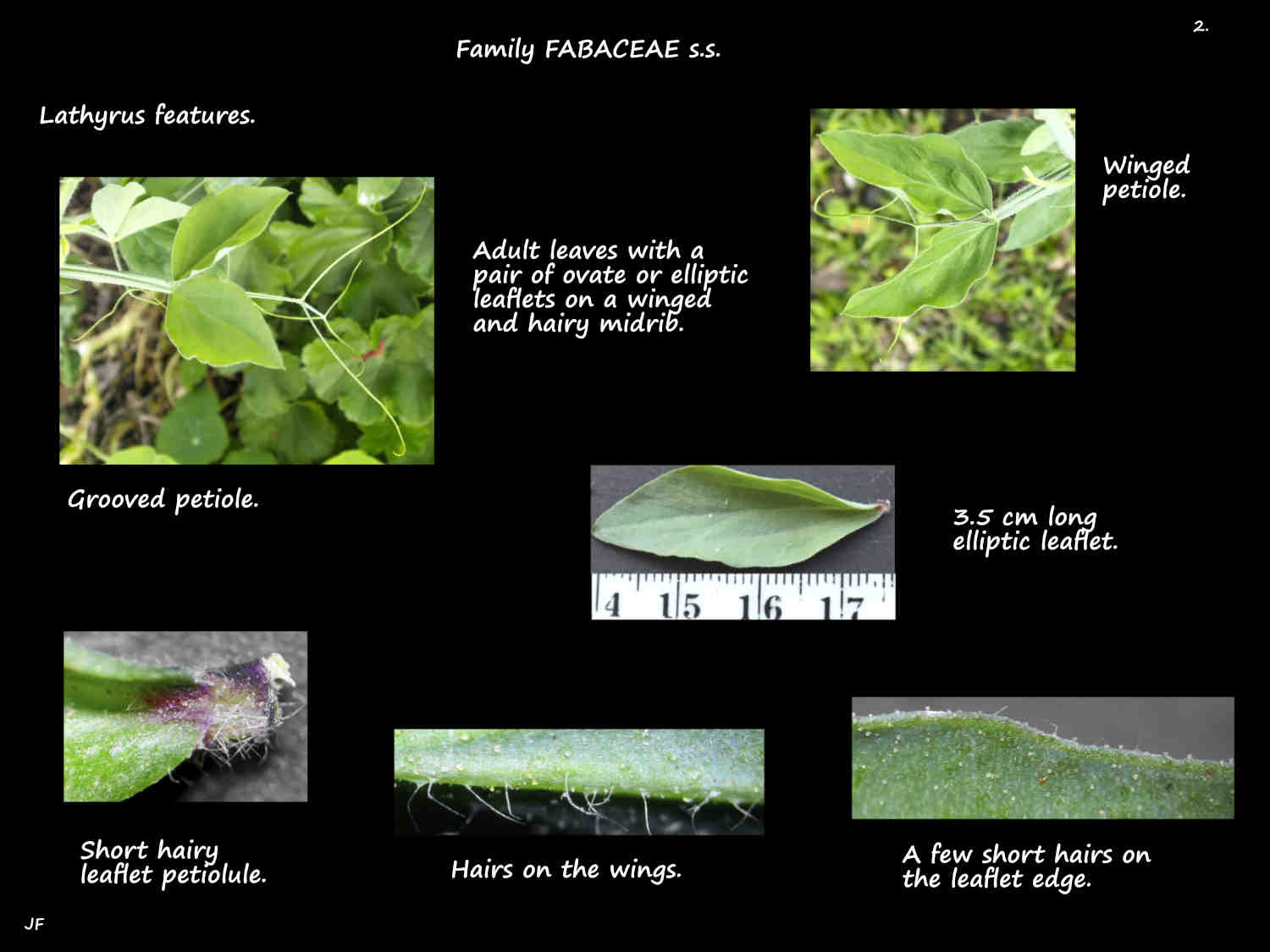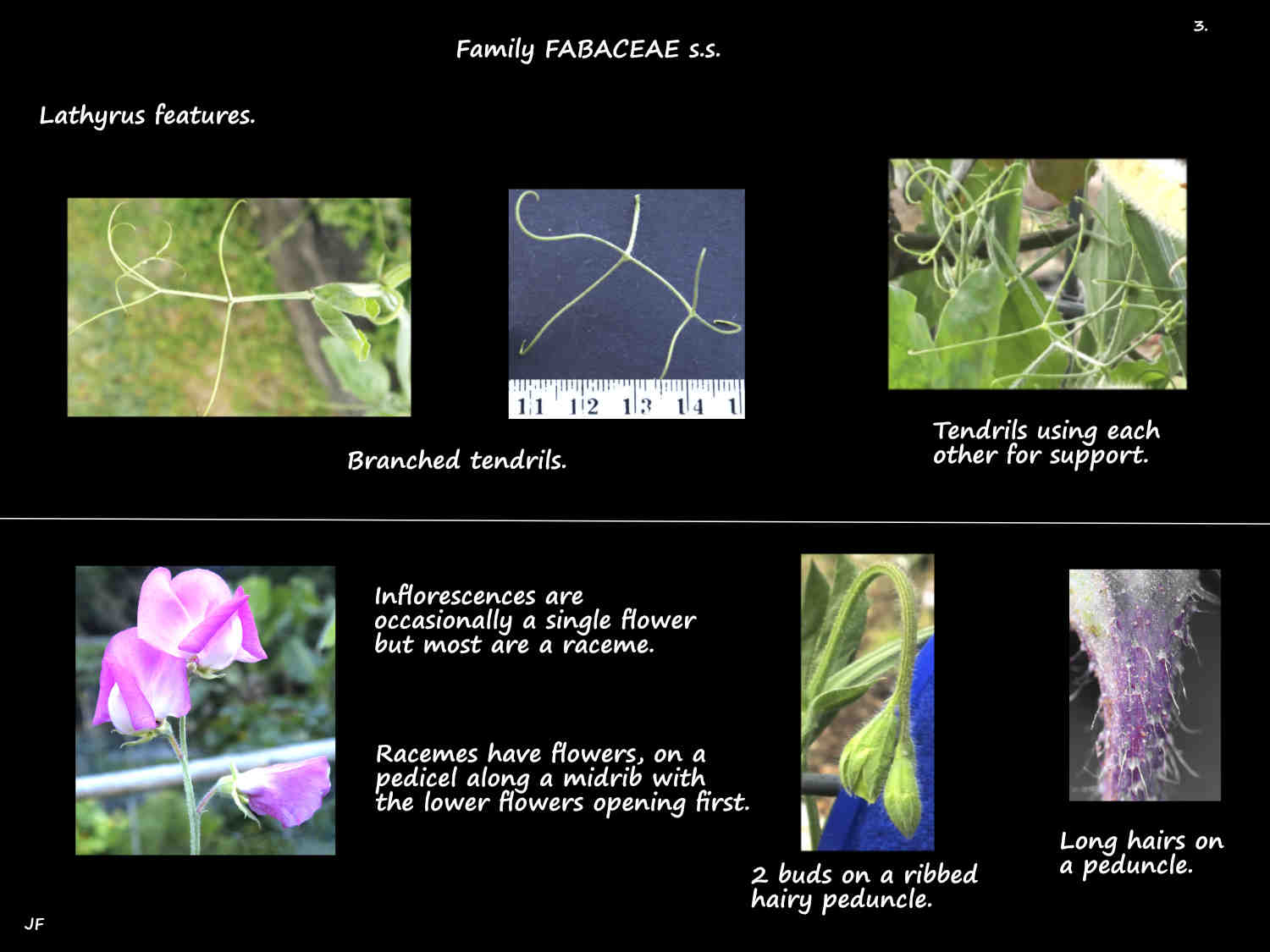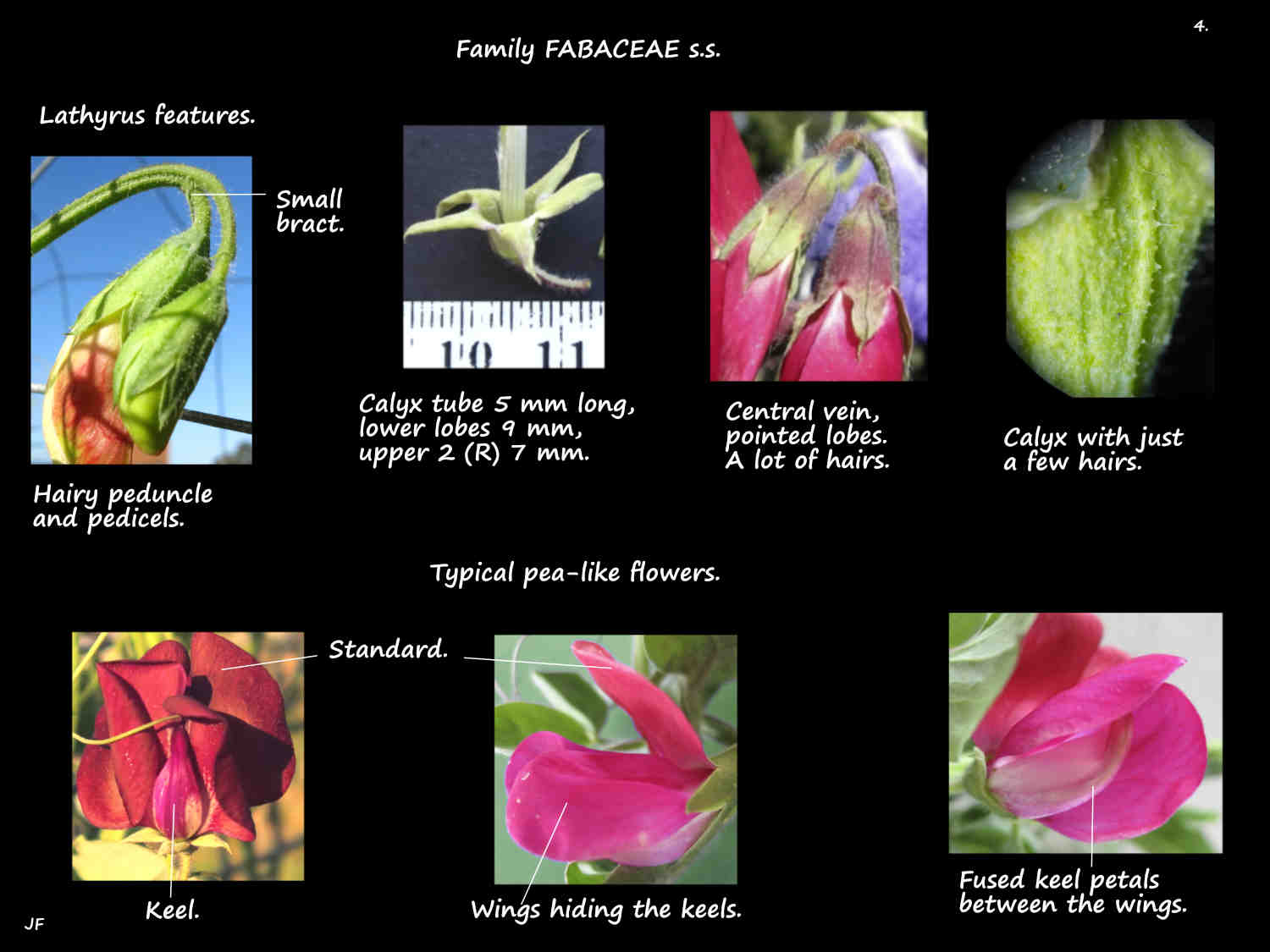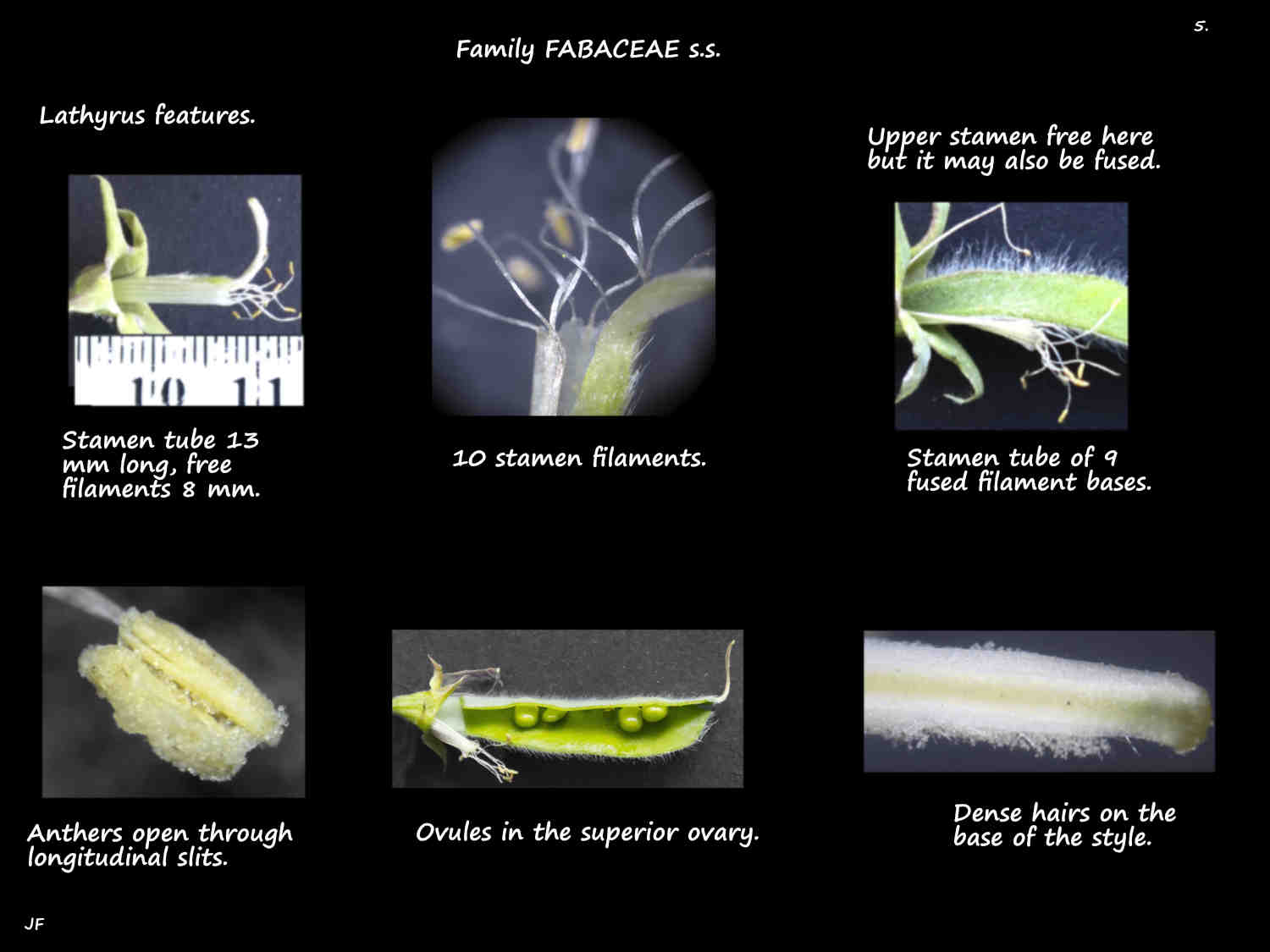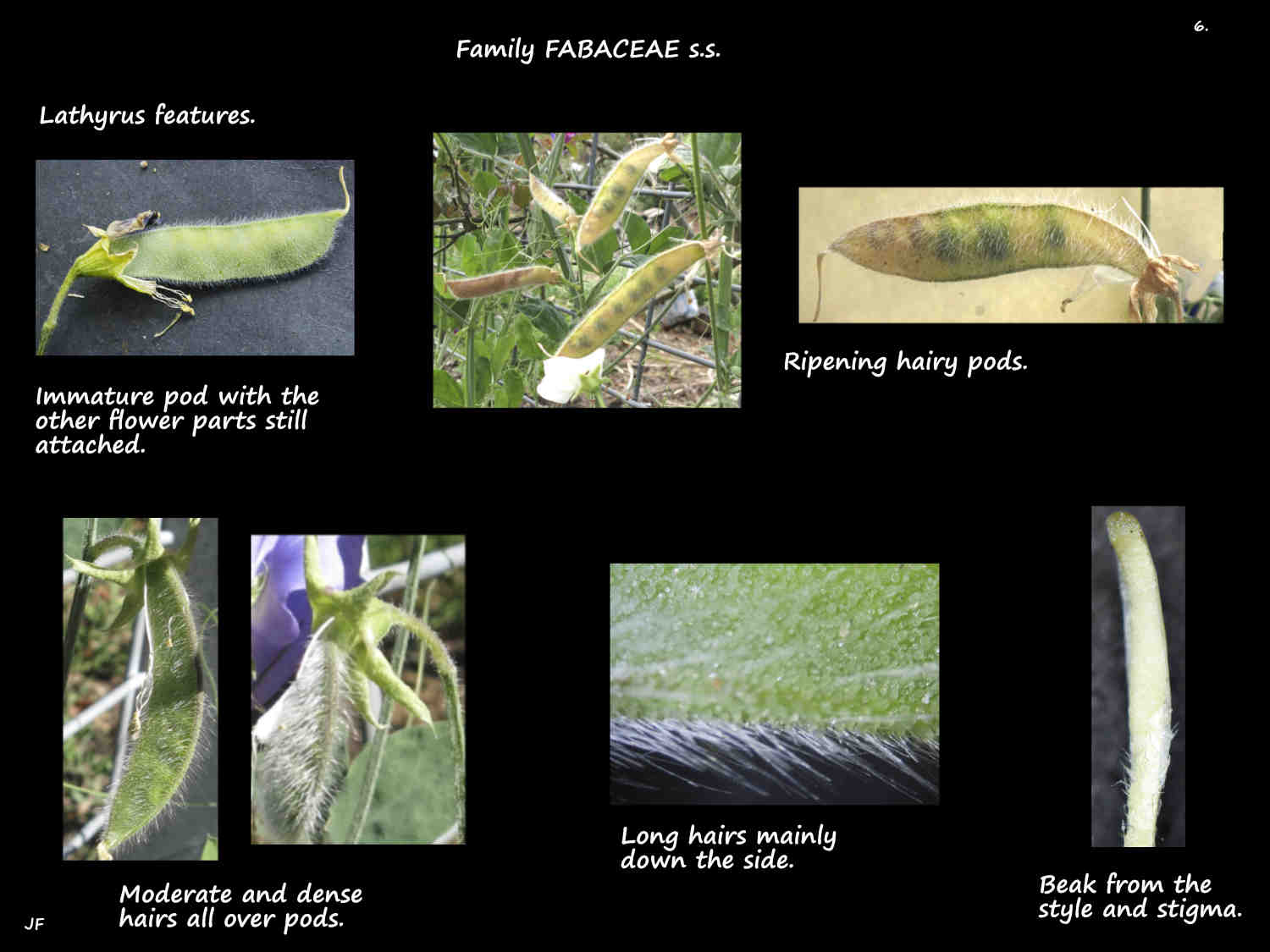Lathyrus.
In Queensland it is in Family Fabaceae > sub-family Faboideae but in some the states it is in Family Leguminosae or Papilionaceae.
Plants of the World Online (Kew) recognises 181 species and lists 24 synonyms.
Pea vines or vetchlings are native to Europe, North America, Asia, East Africa and South America.
Cultivated for around 6000 years some are still seen as garden and cut flowers.
They are annual or perennial herbs with most climbing but some are bushy plants and others sprawl along the ground.
Stems are typically angled and they often have wings and simple hairs.
Alternate leaves are on a petiole that has a stipule on either side of its base.
The large green leaf-like stipules are lance-shaped and often have 2 downward pointing basal lobes.
The usually persistent stipules may have short hairs.
The petiole and midrib may have wings and they are commonly hairy.
Pinnate leaves have one pair of opposite leaflets or occasionally more.
The elliptic to ovate leaflets may have a 1 to 2 mm long petiolule.
Occasionally there is an odd terminal leaflet but this is almost always replaced by a tendril.
The branched tendrils allow the plants to climb.
Axillary inflorescences may be a single flower but most are a raceme with flowers, on stalks along a midrib with the lower flowers opening first.
The peduncle is ribbed and hairy and the tiny bracts fall off early.
The sepal bases are fused into a tube with 5 pointed lobes the upper two of which are sometimes shorter.
The large upper erect standard petal is slightly wider than high.
The 2 oblong side wing petals are free or attached to the keel.
The 2 partly fused keel petals may be longer to shorter than the wings.
Flowers can be white, purple, blue, red or pink.
Nine of the 10 stamens have their filament bases fused into a tube open on the upper side.
The upper tenth stamen is free or fused to the tube.
The almost always hairy superior ovary may be on a short stalk or stipe and it has a variable number of ovules.
The curved style has a lot of hairs on the upper side and a small stigma.
The elongated pods can be cylindrical or flattened sideways.
The spherical, angled or flattened seeds have a smooth or slightly wrinkled surface.
J.F.

